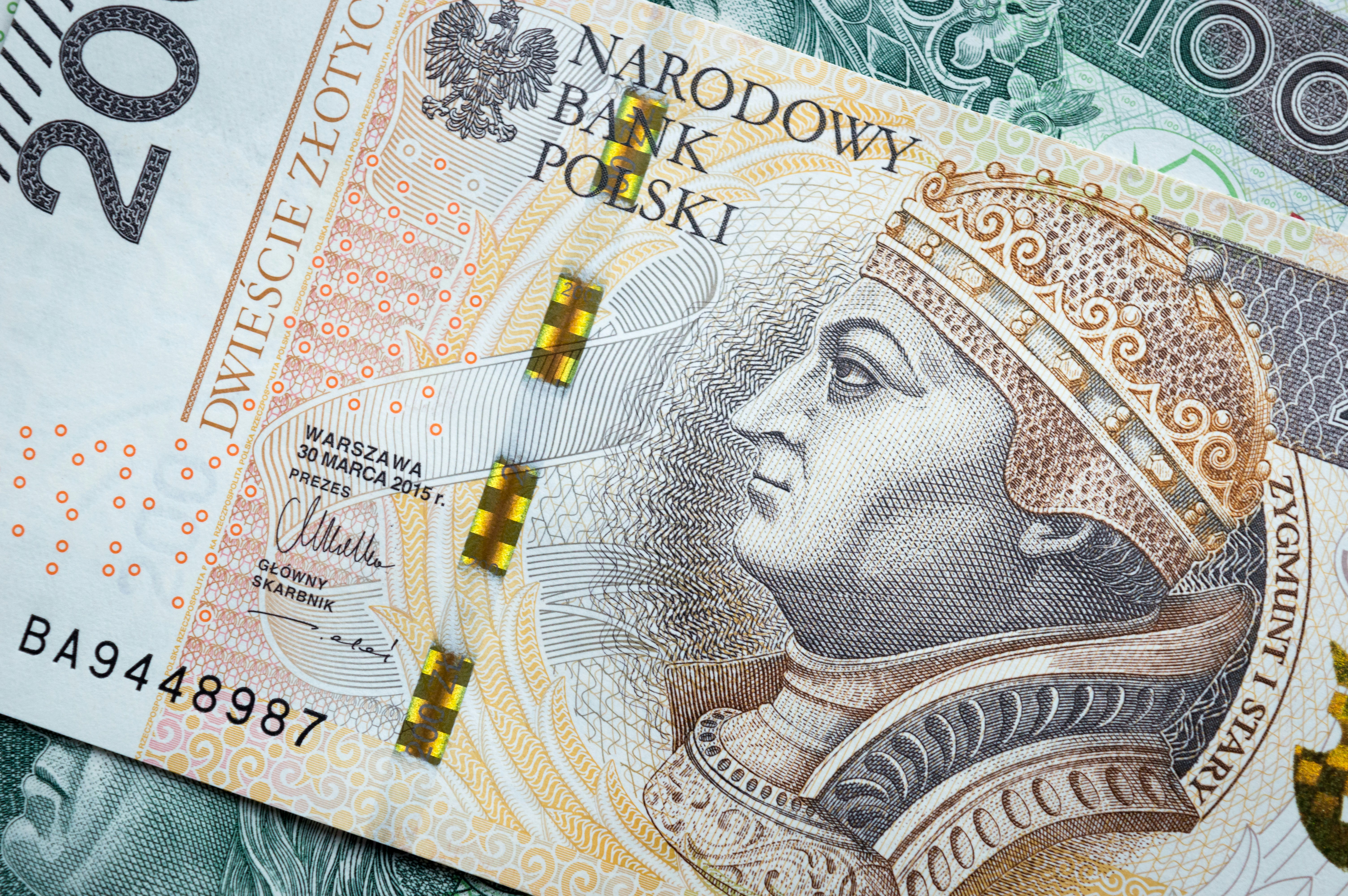Formacja świecowa młota i strategie handlowe
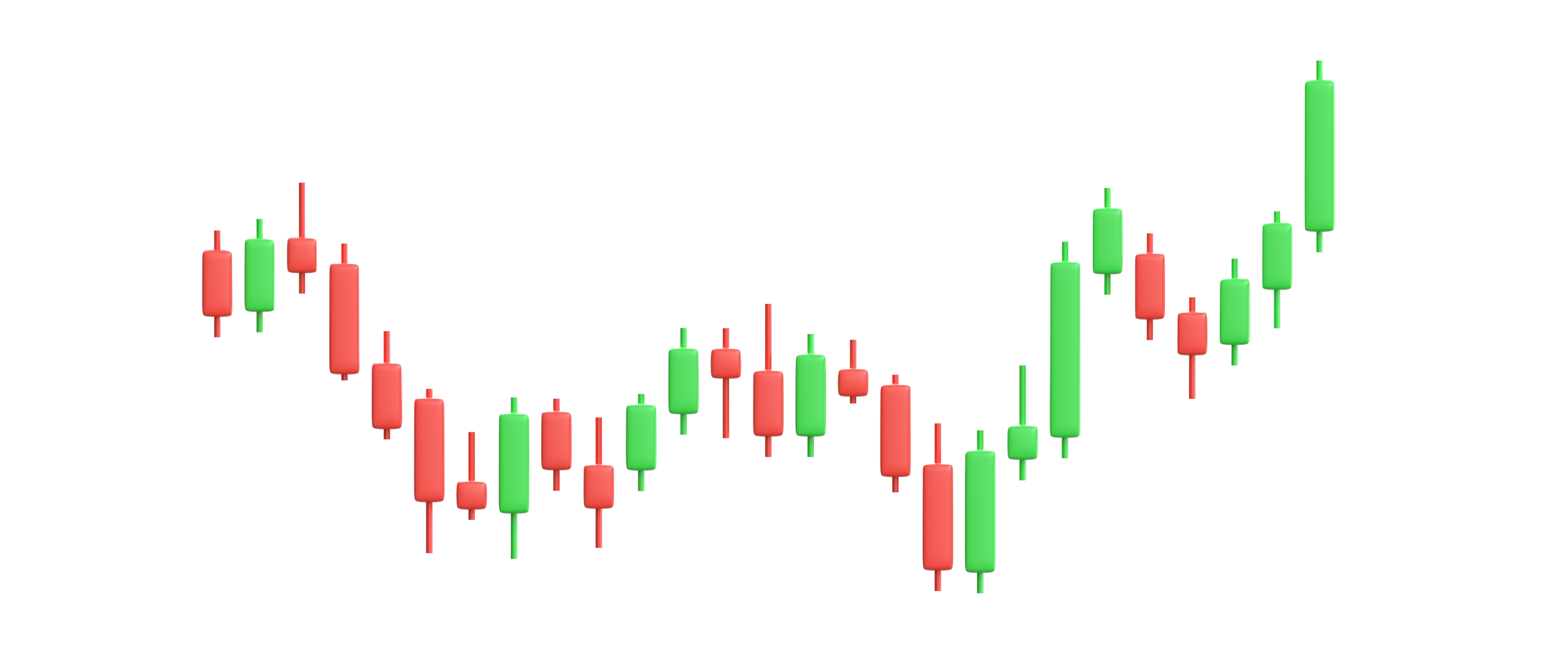)
Analiza techniczna obejmuje różne formacje wykresów handlowych, które pomagają inwestorom zwiększyć skuteczność ich strategii. Jedną z nich jest formacja świecowa młota. Jej nazwa pochodzi od perspektywy: krótkiego korpusu na szczycie i długiego słabego dołu. Wielu traderów uważa ją za jedną z najważniejszych formacji odwrócenia trendu. W tym artykule przyjrzymy się bliżej, czym jest formacja młota, jak powstaje i jak nią handlować.
Spis treści
Kluczowe wnioski
Co to jest formacja świecowa młota?
Jak rozpoznać formację świecową młota?
Warianty formacji świecowej młota
Przykład wykorzystania formacji młota
Różnica między świecą młota a doji
Jaka jest różnica między formacją młota a spadającą gwiazdą?
Ograniczenia w korzystaniu w przypadku młota
Psychologia młota
Praktyczne zastosowanie
Jak handlować formacją świecową młota?
Wnioski
Najczęściej zadawane pytania
Kluczowe wnioski
-
Formacja młota to bycza formacja, która sygnalizuje potencjalne odwrócenie trendu.
- Formacja młota składa się z małego prawdziwego korpusu z długim dolnym cieniem, znanym również jako knot.
- Niektóre odmiany tego wzoru obejmują odwrócony młot, spadającą gwiazdę i wiszącego człowieka.
- Najlepsza skuteczność jest widoczna, gdy młotki są połączone z innymi wzorami i narzędziami technicznymi.
Co to jest formacja świecowa młota?

Formacja młota jest ważną formacją w analizie technicznej. Pojawia się na cenie w postaci "młotka", oznaczonego małym rzeczywistym korpusem u góry i długim dolnym cieniem. Formacja ta sugeruje potencjalne odwrócenie, wskazując na przejście z trendu spadkowego do trendu wzrostowego.
Formacja młota często występuje po spadku, ponieważ wskazuje, że kupujący wkraczają do akcji, potencjalnie podnosząc ceny. Długi dolny cień świecy wskazuje, że sprzedający zepchnęli ceny w dół, ale kupujący odzyskali kontrolę, zamykając cenę w pobliżu poziomu otwarcia.
Odwrócony młot jest formacją odwrotną. Ma mały rzeczywisty korpus na dole i długi górny cień, sygnalizując potencjalne bycze odwrócenie.
Jak rozpoznać formację świecową młota?

Oto kluczowe cechy, których należy szukać, gdy pojawia się młot:
-
Mały prawdziwy korpus na szczycie świecznika
- Długi dolny cień, który jest co najmniej dwa razy dłuższy od ciała
- Niewielki górny cień lub jego brak
- Młot pojawia się po trendzie spadkowym ceny
Warianty formacji świecowej młota
Formacja młota może występować w kilku wariantach. Podczas gdy klasyczny młotek ma mały korpus i długi dolny cień, kolor korpusu (czerwony lub zielony) może się różnić, a czasami może być obecny mały górny knot. Co więcej, istnieją również inne warianty, które można spotkać na wykresach finansowych:
-
Formacja odwróconego młota charakteryzuje się niewielkim korpusem i długim górnym cieniem na końcu trendu spadkowego, co sugeruje możliwą zmianę kierunku ceny.
- Formacja wisielca przypomina formację młota, ale tworzy się na szczycie trendu wzrostowego, wskazując na potencjalny niedźwiedzi zwrot.
- Formacja spadającej gwiazdy to niedźwiedzia wersja odwróconego młota, znajdująca się na końcu trendu wzrostowego. Wskazuje ona na możliwy spadek na rynku.
Przykład wykorzystania formacji młota

Rozważmy przykład formacji młota na wykresie forex. Młot z długim cieniem tworzy się po trendzie spadkowym. Trader dostrzega tę formację młota i czeka na świecę potwierdzającą sygnał. Może to być bycza świeca, która zamyka się powyżej korpusu młota. Następnie inwestor decyduje się na zakup aktywa, wchodząc w długą pozycję. Aby zarządzać ryzykiem, ustawia stop loss tuż poniżej cienia młota. Strategia ta zapewnia, że inwestor minimalizuje ryzyko handlowe, jednocześnie wykorzystując potencjalne odwrócenie trendu.
Różnica między świecą młota a doji
Młotek:
-
sugeruje możliwą zmianę kierunku ceny;
- Jego długi dolny cień i niewielki korpus wskazują na potencjalne przejście z trendu spadkowego do wzrostowego.
Doji:
-
reprezentuje niezdecydowanie na rynku;
- może oznaczać zmianę kierunku lub kontynuację obecnego trendu.
Jaka jest różnica między formacją młota a spadającą gwiazdą?
Młot:
-
ma mały korpus i długi dolny knot;
- pojawia się podczas trendu spadkowego;
- sygnalizuje potencjalne bycze odwrócenie;
- wskazuje, że kupujący odzyskują kontrolę.
Wzór spadającej gwiazdy:
-
ma krótki korpus i długi górny knot;
- występuje po trendzie wzrostowym;
- wskazuje na potencjalne niedźwiedzie odwrócenie;
- sygnalizuje, że sprzedający przejmują kontrolę nad rynkiem.
Ograniczenia w korzystaniu w przypadku młota
Chociaż formację młota są przydatnymi narzędziami w analizie technicznej, należy być świadomym ich wad.
-
Fałszywe sygnały. Hammery mogą czasami pojawiać się bez skutku w postaci odwrócenia trendu, co może prowadzić do pewnych strat, jeśli nie wdrożysz solidnego zarządzania ryzykiem.
- Potrzeba potwierdzenia. Podobnie jak w przypadku każdego innego wskaźnika technicznego, poleganie wyłącznie na świecy młota bez oczekiwania na świecę potwierdzającą może być ryzykowne. Dlatego też lepiej jest połączyć go z innymi formacjami lub narzędziami.
- Ograniczona informacja i skuteczność. Skuteczność świecy młota może się różnić w zależności od ogólnych warunków rynkowych i siły trendu, co czyni ją mniej niezawodną na niestabilnych rynkach.
Psychologia młota
Handlując formacjami, nawet młotem, musisz wiedzieć, że na rynku niedźwiedzia ceny osiągają niższe szczyty i niższe dołki, co wskazuje na pesymistyczne nastroje. Niemniej jednak, obecność młota wskazuje na potencjalne odwrócenie trendu. Dłuższy dolny cień pokazuje, że niedźwiedzia siła spowodowała spadek cen, ale byczy inwestorzy interweniowali i pchnęli cenę z powrotem do poziomu otwarcia. Ta zmiana kierunku cen wskazuje, że kupujący mogą rosnąć w siłę, prawdopodobnie odwracając trend spadkowy.
Praktyczne zastosowanie
Oto kilka praktycznych kwestii, o których należy pamiętać podczas handlu formacjami świecowymi młota.
Sygnał młota
Formacja młota transakcji sugeruje możliwą zmianę z trendu spadkowego na wzrost ceny. Wydłużony dolny cień młota wskazuje, że sprzedający mocno obniżyli cenę, ale kupującym udało się odzyskać kontrolę i sprowadzić cenę z powrotem w pobliże punktu otwarcia. Niewielki rzeczywisty korpus formacji wskazuje na zmianę impetu, skłaniając traderów do przygotowania się na potencjalne odwrócenie trendu.
Szukanie potwierdzenia
Poleganie wyłącznie na formacji młota może być ryzykowne. Przed podjęciem jakichkolwiek działań należy poczekać na potwierdzenie. Zwykle ma to miejsce, gdy następna świeca zamyka się powyżej prawdziwego korpusu młota.
Umieszczanie stopów i realizacja zysków
Handel formacjami młota wymaga strategii zarządzania ryzykiem. Umieść zlecenia stop-loss tuż poniżej dolnego cienia młotka, aby zabezpieczyć swoją pozycję przed potencjalnymi stratami w przypadku, gdy cena podąży w przeciwnym kierunku. Ustal poziomy take-profit, odnosząc się do ważnych poziomów oporu lub poprzednich szczytów.
Jak handlować formacją świecową młota?
W tej sekcji przyjrzyjmy się, w jaki sposób można handlować świecami młotkowymi, aby osiągnąć lepsze wyniki na swojej platformie transakcyjnej.
Strategia 1: Pullbacki na nagich wykresach
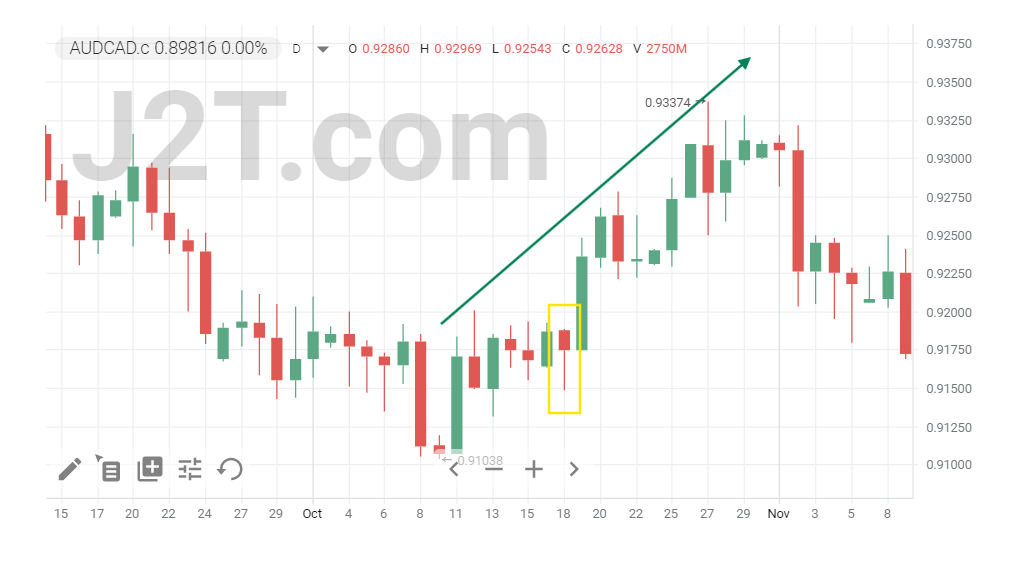
Podczas wdrażania tej strategii należy zwracać uwagę na świece młotkowe, które tworzą się podczas cofnięcia w ogólnym trendzie wzrostowym. Strategia ta opiera się na czystej akcji cenowej, bez żadnych wskaźników. Gdy pojawi się młotek, wejdź w transakcję na otwarciu następnej świecy, ze stop lossem poniżej minimum młotka.
Strategia 2: Handel młotem z poziomami wsparcia
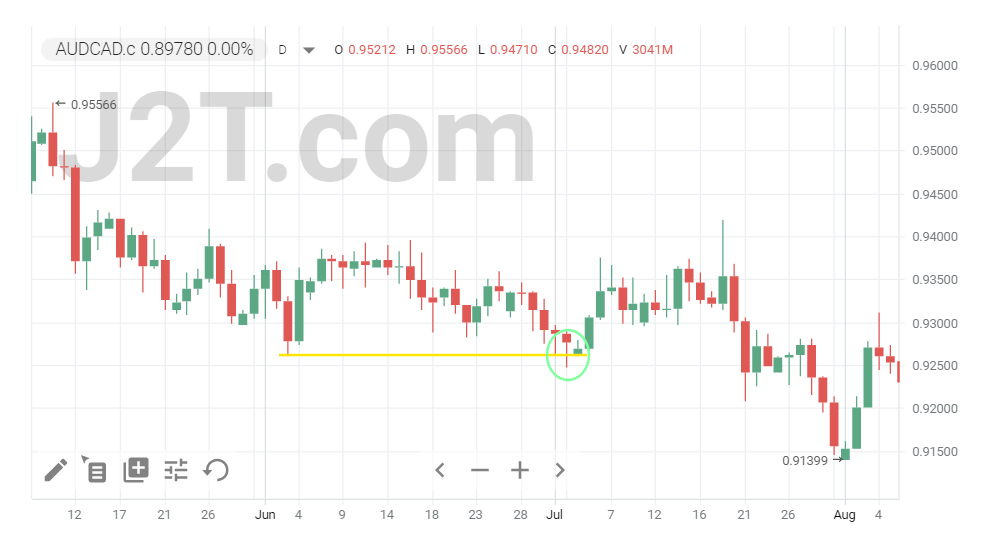
Podejście to koncentruje się na młotkach, które rozwijają się w pobliżu ważnych poziomów wsparcia. Zacznij od narysowania poziomów wsparcia na swoich wykresach. Poczekaj, aż cena spadnie i uderzy w poziom wsparcia. Pojawienie się młotka w tej ważnej strefie wsparcia sugeruje silny potencjał odwrócenia ceny. Zajmij pozycję długą, gdy cena przebije szczyt młotka. Wejdź w transakcję dopiero po potwierdzeniu, ustawiając stop loss w celu zarządzania ryzykiem.
Strategia 3: Handel młotem ze średnimi kroczącymi
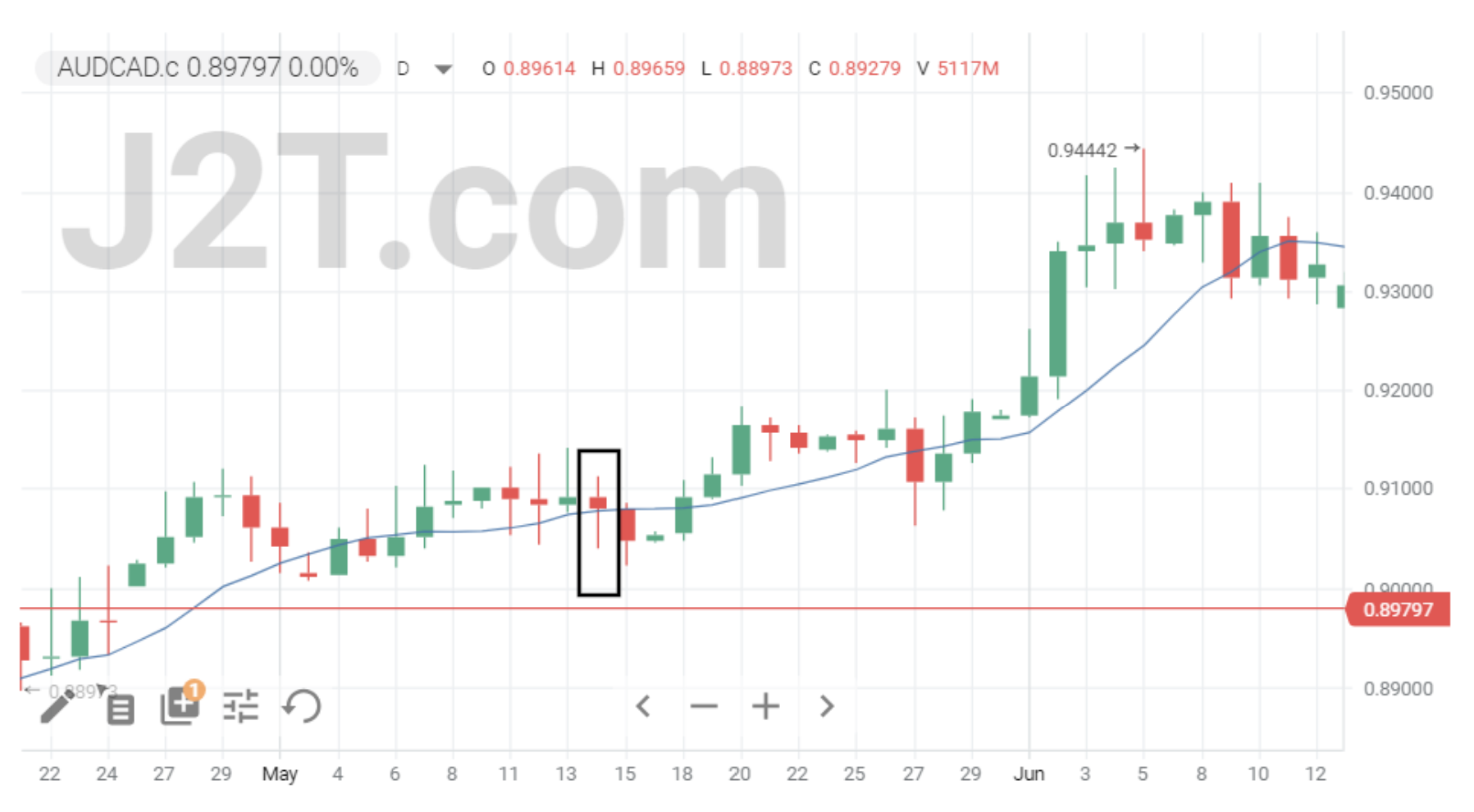
Średnie kroczące pomagają określić ogólny kierunek trendu. Jeśli młotek pojawi się powyżej kluczowej średniej ruchomej (takiej jak 50-dniowa lub 200-dniowa), oznacza to możliwą okazję do zakupu. Poczekaj na potwierdzenie przed wejściem w transakcję i wykorzystaj średnią ruchomą jako elastyczny poziom wsparcia do składania zleceń stop-loss.
Strategia 4: Handel młotem z rozbieżnościami RSI
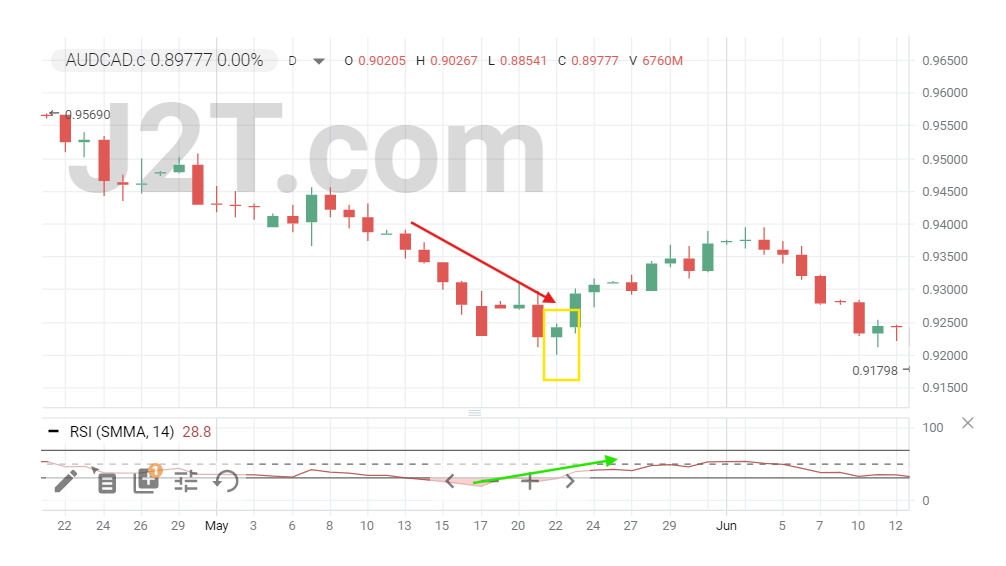
Rozbieżności RSI (Relative Strength Index) mogą zwiększyć skuteczność formacji młota. Szukaj młotów, które zbiegają się z byczymi dywergencjami RSI, gdzie cena tworzy niższy dołek, ale RSI tworzy wyższy dołek. Wskazuje to na słabnący niedźwiedzi impet.
Strategia 5: Handel młotem z Fibonaccim
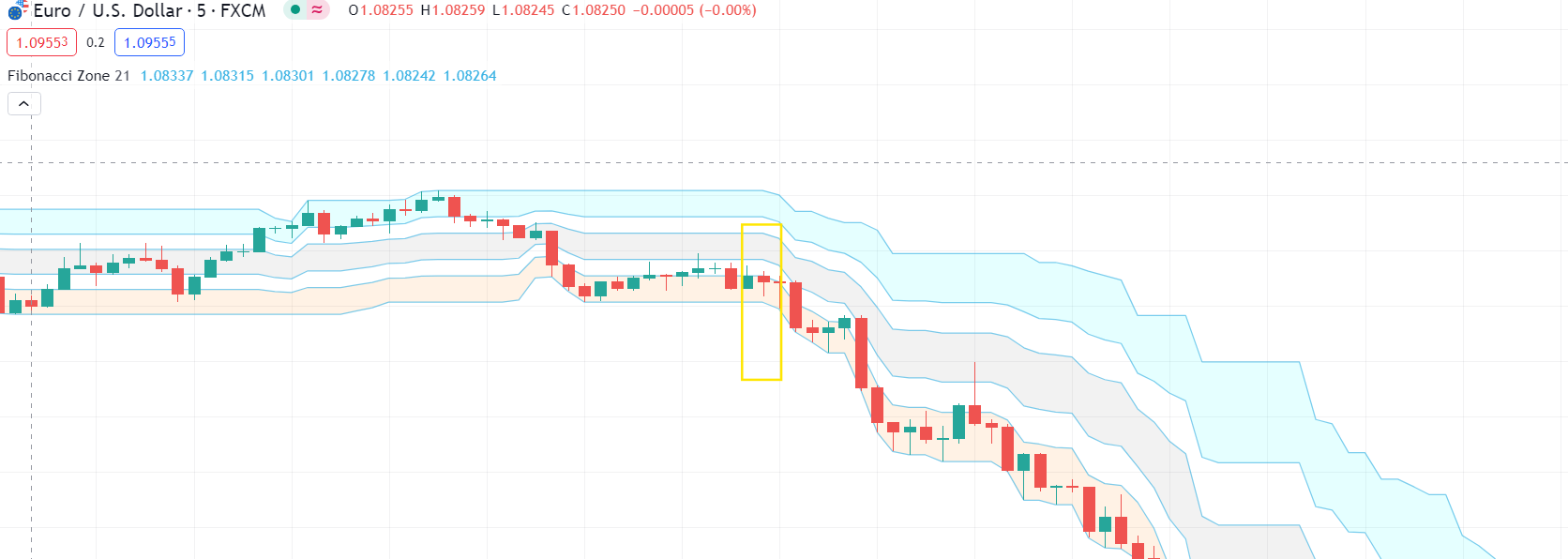
Różne poziomy Fibonacciego mogą być bardziej skuteczne w zależności od siły trendu. Zacznij od rozpoznania trendu wzrostowego, a następnie bądź cierpliwy w przypadku spadku. Użyj instrumentu Fibonacciego, aby ustalić poziomy od najniższego do najwyższego punktu ruchu. Jeśli cena osiągnie poziom Fibonacciego i utworzy formację świecową młota, wejdź w pozycję długą, gdy cena przekroczy szczyt młota. Umieść stop loss poniżej poziomu Fibonacciego i celuj w wyższy poziom dla take profit, w oczekiwaniu na potencjalny ruch w górę.
Strategia 6: Handel młotem z punktami obrotu

Punkty obrotu są przydatne do identyfikacji potencjalnych poziomów wsparcia i oporu. Kiedy młotek formuje się w pobliżu punktu obrotu, wskazuje to na możliwe odwrócenie. Wejdź w transakcję po potwierdzeniu, ze stop lossem poniżej punktu obrotu, aby zabezpieczyć się przed niekorzystnymi ruchami cen.
Wnioski
Formacja młota jest cennym narzędziem dla traderów na każdym poziomie zaawansowania. Wskazuje możliwe odwrócenia i zapewnia strategiczne punkty wejścia w różnych warunkach rynkowych. Integrując te formacje z odpowiednim zarządzaniem ryzykiem i technikami potwierdzania, można zmaksymalizować swój potencjał zysku i zminimalizować straty.
Najczęściej zadawane pytania
Czy formacja młota jest bycza?
Formacja świecowa młota jest ogólnie uważana za byczą. Sygnalizuje ona potencjalne odwrócenie trendu spadkowego, wskazując, że kupujący zaczynają przejmować kontrolę.
Czy formacja młota jest bycza czy niedźwiedzia?
Formacja młota jest byczy. Pojawia się po spadku na rynku i sugeruje, że rynek może odwrócić się w górę.
Czym jest reguła formacji młota?
Zasada mówi, że formacja młota musi pojawić się po trendzie spadkowym. Dolny cień powinien być co najmniej dwa razy dłuższy od rzeczywistego korpusu.
Jak dokładna jest formacja młota?
Formacja młota jest dość niezawodna, ale zaleca się łączenie go z innymi narzędziami technicznymi w celu zwiększenia wydajności.
Jak odczytać formację młotkową?
Podczas trendu spadkowego należy szukać małego korpusu z długim dolnym cieniem. Formacja ta wskazuje, że kupujący pchnęli cenę z powrotem w górę po znacznej presji sprzedaży.
